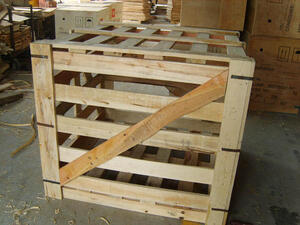-
 Retrouver dansMembres
Retrouver dansMembres Retrouver dansVidéos
Retrouver dansVidéos Retrouver dansChaînes
Retrouver dansChaînes
This website uses cookies to ensure you get the best experience on our website.
To learn more about our privacy policy Cliquez iciPréférence de confidentialité
- Mots clés - #Trash Can Mould
-
- Dernière mise à jour 11 décembre 2020 0 commentaire , 238 vues, 0 comme
More from xiu umin
More in Politics
Related Blogs
How to choose mold structure design and parameters?
Corps
There are many molds, including trash can mould, etc. The requirements of mold design and production are: accurate size, smooth surface; reasonable structure, high production efficiency, easy to automate; easy to manufacture, long life, low cost; design meets the needs of the process, economical and reasonable.
Mold structure design and parameter selection must consider factors such as stiffness, guidance, unloading mechanism, positioning method and gap size. The wearing parts on the mold should be easy to replace. For plastic molds and die-casting molds, a reasonable pouring system, the flow state of molten plastic or metal, and the position and direction of entering the cavity must also be considered. In order to improve productivity and reduce the loss of runner dumping, a multi-cavity mold can be used, and multiple identical or different products can be completed in one mold at the same time. High-efficiency, high-precision and long-life molds should be used in mass production.
The stamping die should use a multi-station progressive die, and the cemented carbide insert progressive die can be used to increase the life. In small batch production and trial production of new products, simple molds with simple structure, fast manufacturing speed and low cost should be used, such as combination molds, sheet molds, polyurethane rubber molds, low melting point alloy molds, zinc alloy molds, and molds. Begin to use computer-aided design (CAD), that is, optimize the design of molds through a set of computer-centric systems. This is the development direction of mold design.
According to structural characteristics, mold manufacturing is divided into flat die and cavity mold with space. The die uses a punch and a die to precisely match the size, and some do not even have a gap. Other forging molds, such as cold extrusion molds, die casting molds, powder metallurgy molds, plastic molds, rubber molds, etc., are all cavity molds used to form three-dimensional workpieces. The cavity mold has size requirements in the three directions of length, width and height, and the shape is complicated and manufacturing is difficult. Mold production is usually single piece, small batch production, with strict and precise manufacturing requirements, and most of them use precision processing equipment and measuring devices.
If you want more information, please contact us: crate mould manufacturer.









commentaires